Planning to generate amount of power from renewables equivalent to Group's entire current energy consumptionThe Daiwa House Group "DREAM Solar" Project
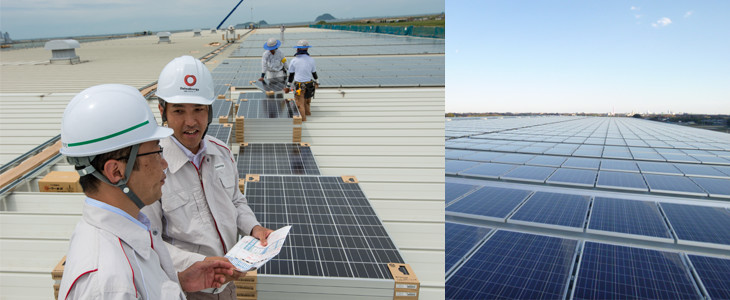
The Daiwa House Group is actively pursuing initiatives to generate electricity through wind-power, solar-power, and hydroelectric facilities utilizing unused land owned by the Group itself or by other corporations as well as local governments.
We are currently making optimum use of the technological expertise that we have built up since the founding of Daiwa House Industry, with the goal of generating a total of 120 megawatts of electricity from renewable energy sources by the end of fiscal 2015, which will be equivalent to the entire energy consumption of the Group.
Our track record in the adoption of renewable energy
Since the early days of interest in environmentally friendly, renewable energy sources, the Daiwa House Group has been one of the forerunners in the development and adoption of wind-power and solar power generation systems, which are promising forms of clean energy technologies that help to protect the global environment.
In fiscal 2000 the Group's first large-scale (600kW) wind turbine was erected in the grounds of the Okinawa Zanpamisaki Royal Hotel. This was followed in fiscal 2005 by the joint development together with a manufacturing company of small (10kW) wind turbines under the brand name Kazenagasu Kujira. Meanwhile, in the field of solar systems, from an early stage we took part in field tests conducted by the New Energy and Industrial Technology Development Organization (NEDO), and have been installing such equipment at Group factories around Japan as well as at shopping malls, hotels, and other facilities.
In February 2007, on the Sadamisaki Peninsula in Ehime Prefecture on the island of Shikoku, we completed construction of a wind power facilities comprising nine 1,000kW turbines. This marked our full-scale entry into the field of renewable energy. This wind power generates about 30,000MWh of power per annum, sufficient to meet the electric power needs of around 6,500 ordinary households. Since 2009 it has been chosen by METI and NEDO for inclusion in the list of alternative energy initiatives as a pioneering example of the use of cutting-edge technology, making optimum use of local characteristics.

Solar panels on the roof of the staff canteen of Daiwa House industry's Chubu Factory(30kW output)

Sadamisaki wind power generation facilities (9MW output)
Accelerating the development pace of our DREAM Solar business
A feed-in tariff system for renewable energy, intended as a first step toward the realization of a low-carbon economy, has been implemented since July 2012 in Japan, and this has led to a rush to build large-scale solar power facilities all across the country.
The Daiwa House Group has considerable experience in this field, in the form of technological expertise in the construction industry and the know-how required to operate large-scale solar power facilities. We have therefore leveraged this experience to speed up the expansion of the Group's DREAM* Solar large-scale solar power generation business – referred to as the "mega-solar business" in Japan – which offers a one-stop solution to customers' power needs. As practical examples of the sort of solutions we can offer, we have been installing solar power facilities on the roofs of buildings owned by Group companies, as well as on unused land sites.
One of our short-term targets with respect to the DREAM Solar project was to generate an amount of electric power from renewable energy sources equivalent to the entire energy needs of Daiwa House Industry by the end of fiscal 2015. To this end, we have identified unused plots of land – as well as the roofs of buildings – that are owned by Daiwa House Group companies and deemed suitable for installation of solar panels. We have drawn up a plan to install wind-power and solar power equipment capable of generating a combined total of 120 megawatts, and are moving forward with construction and operation of these facilities.
* The name DREAM is derived from the initial letters of Daiwa House Group, Renewable, Energy, Assets, and Management.


Daiwa House's voice
"Japan's feed-in tariff system applicable to power produced by solar generation systems went into operation in July 2012. Since then, the Daiwa House Group has been actively pursuing the construction of large-scale solar ("mega-solar") systems, utilizing idle land as well as the roofs of manufacturing plants and other suitable sites. By utilizing land assets for solar power generation that would otherwise be difficult to monetize through the construction of buildings, we believe that we can simultaneously raise the Group's enterprise value and assist in the fight against global warming.
Going forward, we will leverage our experience in the installation of solar panels on the roofs of single-family houses, our know-how in the field of civil engineering, and our track record in the operation of wind-power generators to expand the popularity and usage of renewable energy in Japan."
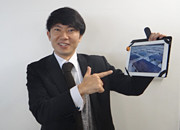
Megumu Sonobe
Senior Chief, Business Planning Promotion Group, Corporate Strategy Planning Department
Daiwa House Industry Co., Ltd.
Examples of Successful Projects
DREAM Solar Eniwa – Utilizing the former site of a Group factory
Generation of electricity commenced in April 2014 at the DREAM Solar Eniwa facility – the Daiwa House Group's first mega-solar venture in Hokkaido. This large-scale facility, with a total output of 1.8 million megawatts, has been erected on the site of a factory (the Sapporo Factory) formerly operated by Daiwa House in the city of Eniwa in Hokkaido.
In DREAM Solar, the Group offers a seamless one-stop service covering everything from initial surveys through design and construction to operation and management. In the Eniwa project, Daiwa House Industry erected the mega-solar power generation facility and then leased it to subsidiary Daiwa Energy, which operates the facility as an independent power producer. All energy generated from sunlight during the day is sold to electric power utilities.
The design of this facility had to take into account the fact that Hokkaido receives heavy snowfalls during the winter months. This required the foundations to be constructed higher than normal, as well as the solar panels to be set at a different angle, among other issues. The Daiwa House staff put their know-how in solar power facility operation to good use to ensure high-efficiency power generation.
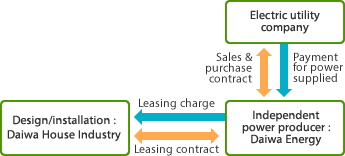

DREAM Solar Eniwa
Daiwa House's voice
"The site of the DREAM Solar Eniwa facility was occupied by our Sapporo Factory up to 2008. The factory was engaged in the manufacture of housing products for the Hokkaido market. Following the centralization of the manufacture of such products at our Tohoku Factory, we converted part of the Sapporo Factory for other uses, including as a logistics center, but the rest of this large site remained idle land, and we therefore looked around for some use to which it might be put.
The mega-solar project on which we embarked was intended both to make effective use of Company assets and to make a contribution to the economic life of the Hokkaido region by addressing the shortage of electric power, from which Hokkaido had suffered in the aftermath of the Great East Japan Earthquake of March 2011."
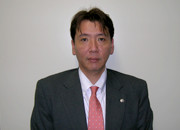
Ryoichi Nishimoto
Assistant Manager, Property Management Promotion Group Property Management Office
Daiwa House Industry Co., Ltd.
DREAM Solar Misato – Utilizing the roof of a Company logistics facility
Daiwa House offers the D-Project business format, in which we not only design and build logistics facilities, but also provide complete logistics solutions to meet all our customers' needs, and under this format, we have built over 100 facilities all over Japan since 2002. The surface area of the roofs of large-scale logistics facilities amounts to tens of thousands of square meters, making it possible to generate extremely large voltages of electric power through the installation of solar panels. Realizing this, we devised the DREAM Solar concept, and are now applying it to the roofs of all the logistics facilities that we own and/or operate throughout the country.
The DPL*1 Misato facility, completed in August 2013 and located close to the Misato Interchange in Misato City, Saitama Prefecture, was the first multi-tenant logistics facility constructed by the Daiwa House Group. The design of this facility took the environment into full consideration, and it has been awarded the top-level "S" ranking under the CASBEE*2 assessment system. In November 2013 we installed solar panels on the facility's roof with a power output of one megawatt of electricity, and commenced a mega-solar business under the name DREAM Solar Misato.
- *1 DPL = D-Project Logistics (logistics facility developed under the D-Project scheme)
- *2 CASBEE = Comprehensive Assessment System for Built Environment Efficiency.(The system has five rankings: S, A, B+, B-, and C.)
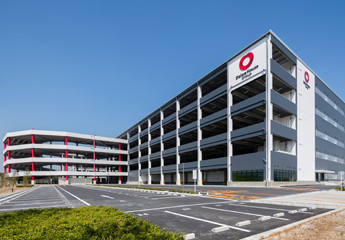
DPL Misato

DREAM Solar Misato
Daiwa House's voice
Yoshitomo Narukawa: "Regarding the DPL Misato facility, I was in charge of matters from the design of the facility as a whole to customizing individual sections for each of the tenant companies, as well as the recent installation of the mega-solar equipment.
I worked together with Katsushi Kurokawa, who was in charge of the architectural design, and we held numerous discussions regarding how to design a logistics facility that had a minimal negative impact on the natural environment. We also undertook studies to select the optimal combination of large-capacity storage-battery modules and power conditioners to allow us to maximize the power capacity of the solar equipment and create a high-efficiency generation system.
Going forward, I hope to make good use of the experience I have gained through this project, and the know-how I have acquired, to contribute to the increased use of renewable energy generation equipment at logistics facilities."

Yoshitomo Narukawa (left)
Chief, Equipment Technology Department, Tokyo Head Office
Daiwa House Industry Co., Ltd.
Katsushi Kurokawa (right)
Chief, Design Department, General Construction Department, Tokyo Head Office
Daiwa House Industry Co., Ltd.
DREAM Solar Fukuoka-Miyawaka – Utilizing idle land belonging to local landowner
With the aim of further expanding our DREAM Solar initiative, which has hitherto been applied to a number of unused land sites belonging to the Daiwa House Group, as well as to the roofs of Group facilities, we are now working on a project to make use of idle land belonging to local government authorities and other business corporations.
In June 2013 we completed construction of a large-scale solar power generation facility on the site of the former Kaijima Coal Mine in Miyawaka City, Fukuoka Prefecture. The site is approximately 300,000 square meters in area, and the solar power facility has a total power output of 19.5 megawatts, broken down into three generating systems: No.1 with an output of 16.0MW, No.2 at 1.9MW, and No.3 at 1.5MW. The commercial power generation business was commenced in October 2013. This solar power facility is the seventh-largest in the Kyushu region and the third-largest in Fukuoka Prefecture, based on a survey conducted by Daiwa Energy in March 2013.
In this project, a leasing company leased the land in question from the landowner and then concluded a contract for the construction of a mega-solar facility on the site with Daiwa House Industry. Daiwa Energy then leased the facility from the leasing company and commenced operation in the capacity of an independent power producer (IPP). All electricity generated during the day is sold to an electric power utility.
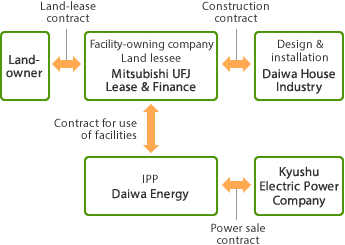
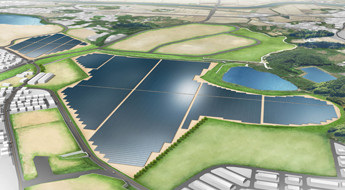
Artist's impression of DREAM Solar Fukuoka-Miyawaka when complete
Daiwa House Group's voice
"The Daiwa House Group has installed and operated numerous large-scale solar facilities, but the DREAM Solar Fukuoka-Miyawaka is particularly large, with a combined output of 19.5 megawatts from all three installation phases. Having been part of this project for two years from initial planning to the start of installation, I had developed a considerable emotional involvement in it.
The expertise in land-use planning that the staff of Daiwa House Industry have developed over many years of experience in the construction business was displayed to full effect in the conduct of this project. In addition, we devised a win-win business plan for both the landowner and the IPP that encompassed close collaboration with the leasing company over the leasing of the land and the ownership of the solar facility. Going forward, the member companies of the Daiwa House Group will join hands in devising and implementing a variety of business formats with the goal of contributing to the well-being of society through the expanded use of renewable energy projects."
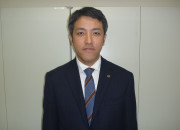
Yoshiteru Adachi
Leader, New Energy Business Division
Daiwa Energy Co., Ltd.
DREAM Solar Wakayama City – Utilizing idle land owned by the local government
In October 2013 the Daiwa House Group signed an agreement with the city of Wakayama on the DREAM Solar Wakayama City project, in which a solar facility with a total output of roughly 20 megawatts would be installed on a 358,000 square meter site (equivalent in area to about nine baseball stadiums) that had formerly been used for the extraction of soil and gravel, etc. used in the construction of Kansai International Airport.
In this project, Daiwa Lease was to act as the IPP, while the design and installation of the facility were to be performed by Daiwa House Industry and Daiwa Service was to manage the facility. The project thus entailed a new type of close intra-Group collaboration. Construction started in June 2014 and will complete in March 2016.
The Daiwa House Group has not only installed this solar system, we also contribute to the fight against global warming by donating three percent of the value of sales of power produced by the facility to Wakayama City. This money is for use in the maintenance of parks and acquisition of land for the planting of greenery, and for the replacement of conventional streetlights with power-saving LED lighting. We have also set aside a space on the facility site where groups of elementary and junior-high school students can come to learn about environmental issues, and have donated transportable lithium-ion storage battery systems to Wakayama City for use as emergency power sources. In these and other ways, we are contributing to the regional community.

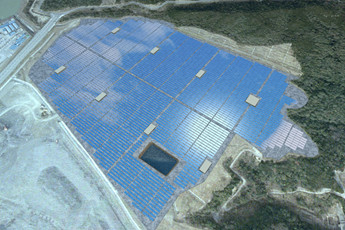
Artist's impression of DREAM Solar Wakayama City when complete
Daiwa House Group's voice
With an output of 20 megawatts, DREAM Solar Wakayama City is the largest solar facility yet handled by the Daiwa House Group. Although we had not handled anything this large before, thanks to the full cooperation of other Group companies that we enjoyed – including the parent company Daiwa House Industry as well as Daiwa Service – we were able to sign an agreement on the project with Wakayama City. The period from this to the completion of the facility and the start of electricity sales was roughly two years, which seemed a very long time, but due to the collaboration between the local government and private-sector enterprises, from now on we can look forward to making a significant contribution to the economic life of the local community.
Going forward, I am sure that this project will not be a one-off, and I look forward to taking optimal advantage of the experience that it has given us. I hope that we will be able to leverage our growing technological expertise in this field to further grow our renewable energy business.
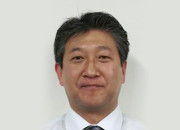
Masaru Shiba
Deputy Manager, Sales Office, Environmental Greening Service
Osaka Head Office, Daiwa Lease Co., Ltd.



